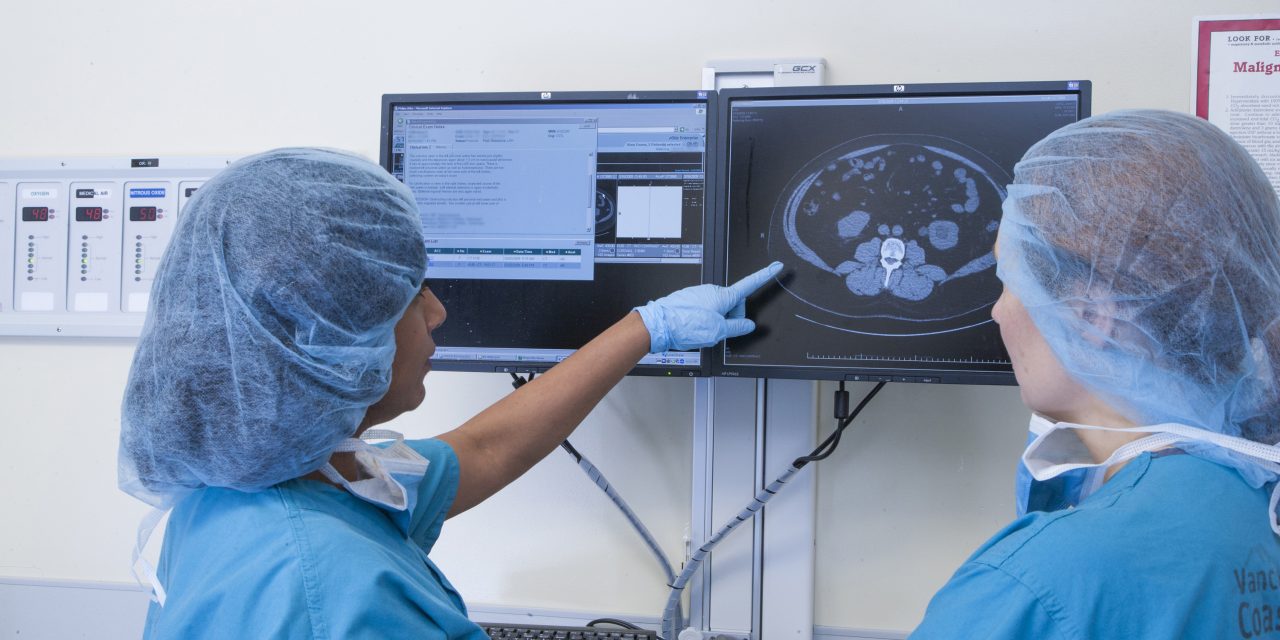
Signal Intensities and Weighted Images

In this column, I would like to review some of the typical signal intensities that various tissues exhibit on MRI in order to build a foundation that we can use to help distinguish normal from abnormal. As you may recall from the column in the last issue of this journal, the atomic particle that is responsible for generating a signal (whiteness or brightness) on an MRI image is the hydrogen proton, specifically the free hydrogen proton. It would follow that tissues that contain relatively few hydrogen protons will generate a relatively little signal and the tissue thus will appear dark or black. Tissue such as cortical bone, for instance, does not contain many hydrogen protons and as a result, this tissue appears black on all imaging sequences. This is true whether we are referring to a T1, T2 or proton density weighted image. Regardless of the sequence type, because there simply is nothing to generate a signal, the cortical bone will always appear dark. We can see this on a typical spinal MRI study if we look at the vertebral body endplates which appear as a black line.
T1 Weighted Sequences
T1 weighted sequences are sometimes referred to as fat weighted images. This term is used because the brightest signal intensity seen on a T1 weighted image is fat. Water, on the other hand, is relatively darker on a T1 weighted image. Thus we can determine if a given image has T1 weighting by looking at areas that we know contain water and areas that we know have a large fatty component. In the spine, we can use the cerebrospinal fluid for our water reference and subcutaneous fat for our fat reference. If we see dark CSF and bright subcutaneous fat, we can assume that the image we are looking at is T1 weighted.
T2 Weighted Sequence
In contrast, let’s look at a typical T2 weighted sequence. T2 weighting is referred to as water weighting. The substance with the brightest signal intensity on T2 weighted images is water. Fat is also somewhat bright on T2 although not quite to the same degree as on T1. With spinal MRI, CSF on T2 weighted images will appear bright (white). Subcutaneous fat is also bright but slightly less so than on T1.
Bone marrow in most individuals contains a fair amount of fat interspersed throughout the trabecular bone. As a result, even though there is bone in the marrow, the fat component will cause a degree of increased signal intensity on both the T1 and T2 weighted images. This signal with being markedly higher than cortical bone. In younger individuals, there is a greater percentage of red marrow which does contain an increased water component and not much fat. The appearance of this tissue is different than the expected marrow signal intensity and as you may have suspected, appears more water weighted.
The spinal cord exhibits a gray signal intensity on both the T1 and T2 weighted images. Muscle tissue is also largely gray in signal intensity, however, is darker on the T2 than the T1 weighted sequences.
Why Multiple Sequences?
So you may be asking the question at this point, “Why do we perform different sequences for a given body part?” If we were sure that we were dealing with normal tissue, the answer would be that we wouldn’t need multiple sequences. Of course, in reality, we don’t expect that all the tissues that we are going to image are normal. That is the whole point of doing the exam in the first place. We want to be able to exclude pathology. It is the interplay of signal intensities on the various sequences that allow us to distinguish normal from abnormal tissues. One of the simplest examples that I can give is that of a neoplasm. Typically, non-fat tumor tissue will appear at least somewhat bright on T2 weighted images and dark on T1 weighted images. A fat based lesion, such a hemangioma, would exhibit increased signal on both the T1 and T2 weighted images. This is a bit of an oversimplification; however, it serves to demonstrate the importance of being able to compare one sequence to another in order to arrive at a correct diagnosis.
Having various sequences to compare to each other gives us insight into the character of tissue or lesion that other imaging modalities cannot provide. CT, for instance, is wonderful for identifying calcifications in soft tissue but does not give us the same amount of information in categorizing other soft tissue components. Plain film radiography has even more limitations than CT in regard to soft tissue evaluation. MRI is the superior imaging modality for soft tissues and it provides good imaging for bone as well. It can provide unique information and may be considered the preferred modality for advanced musculoskeletal imaging in most cases.


















